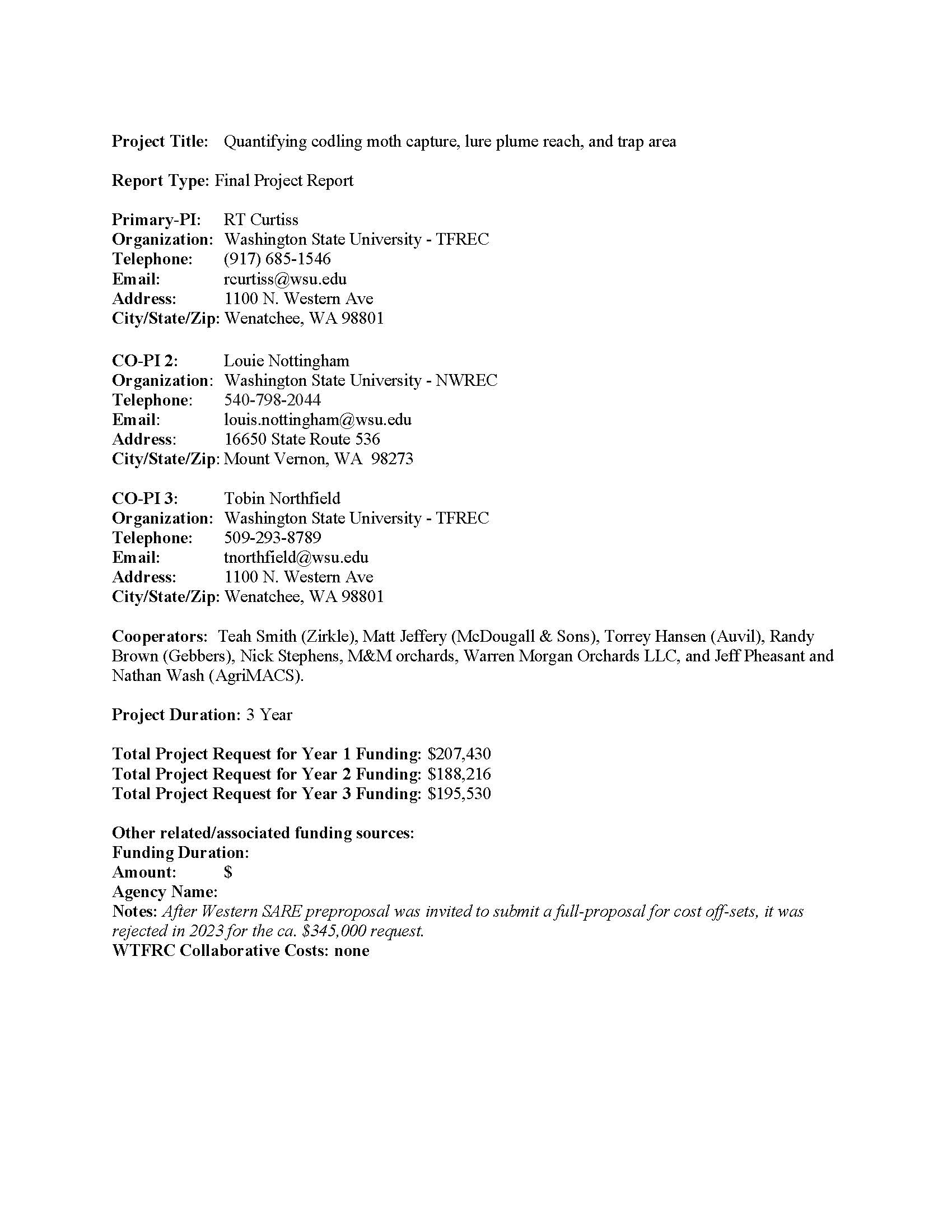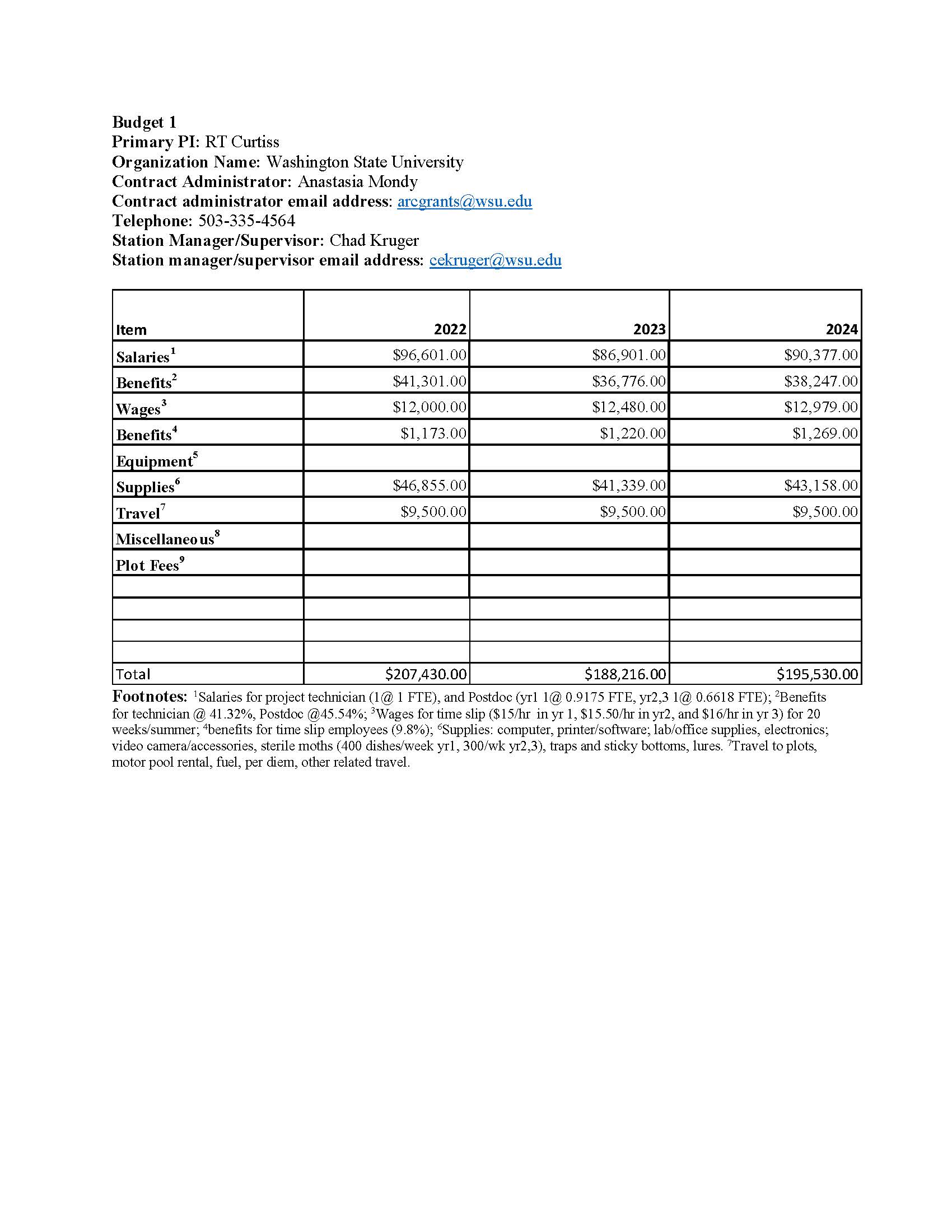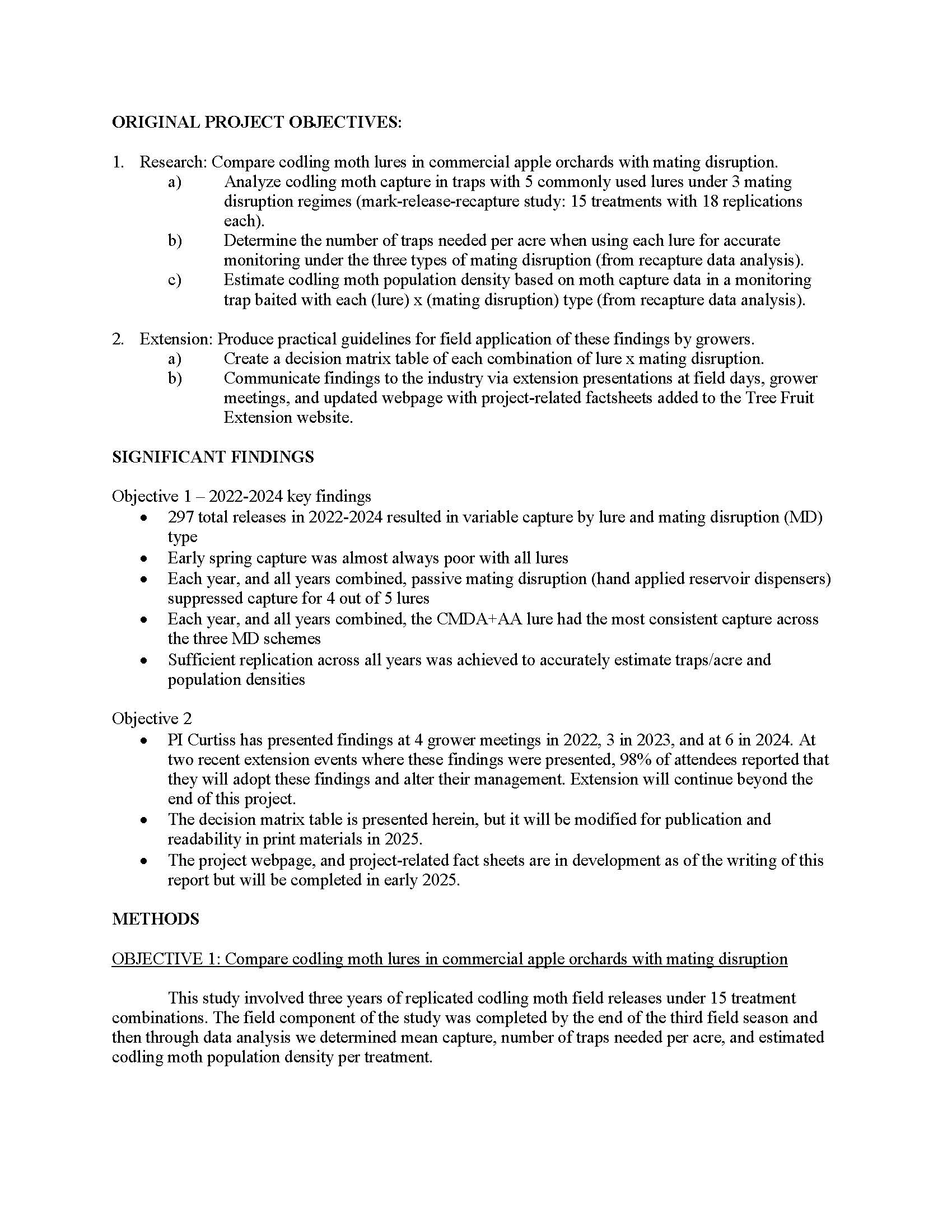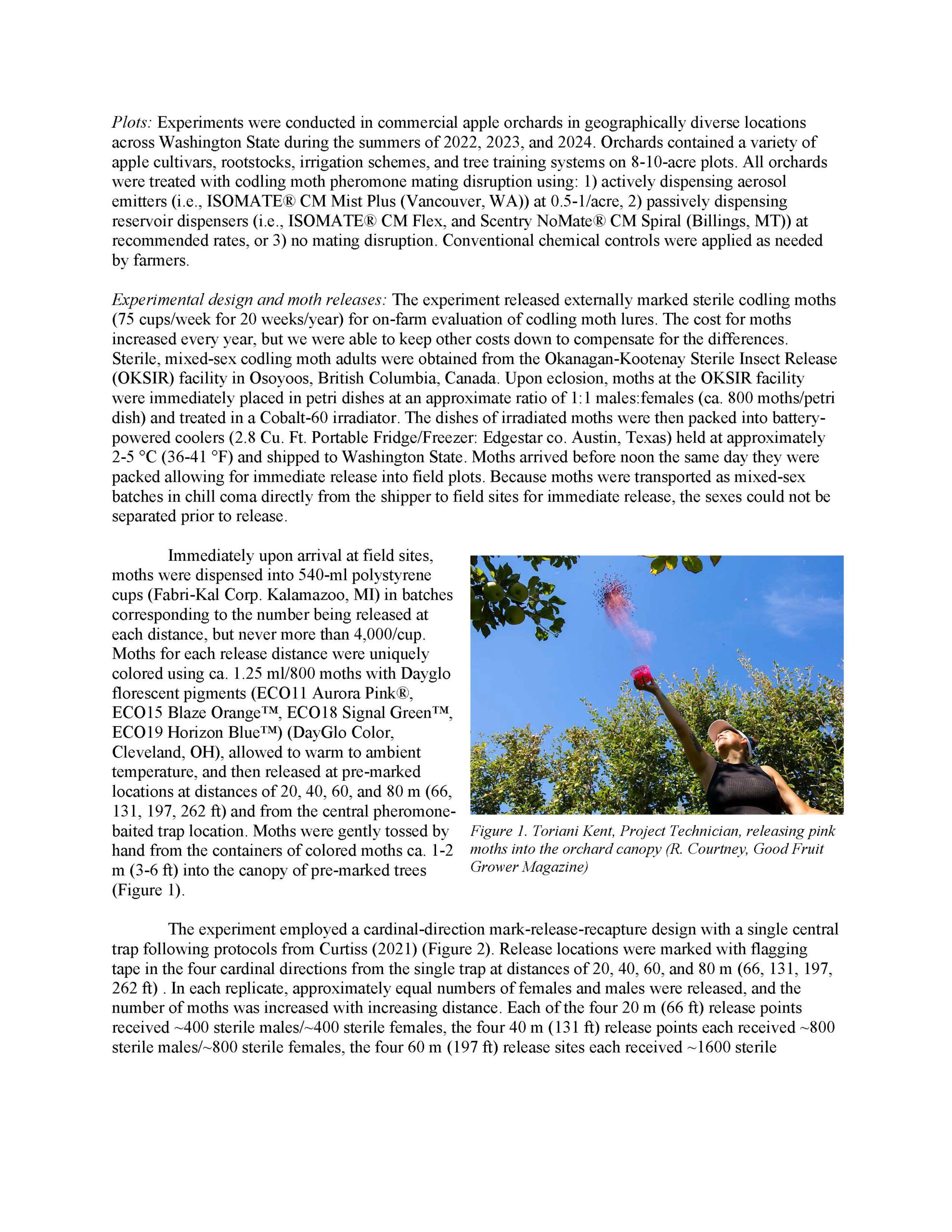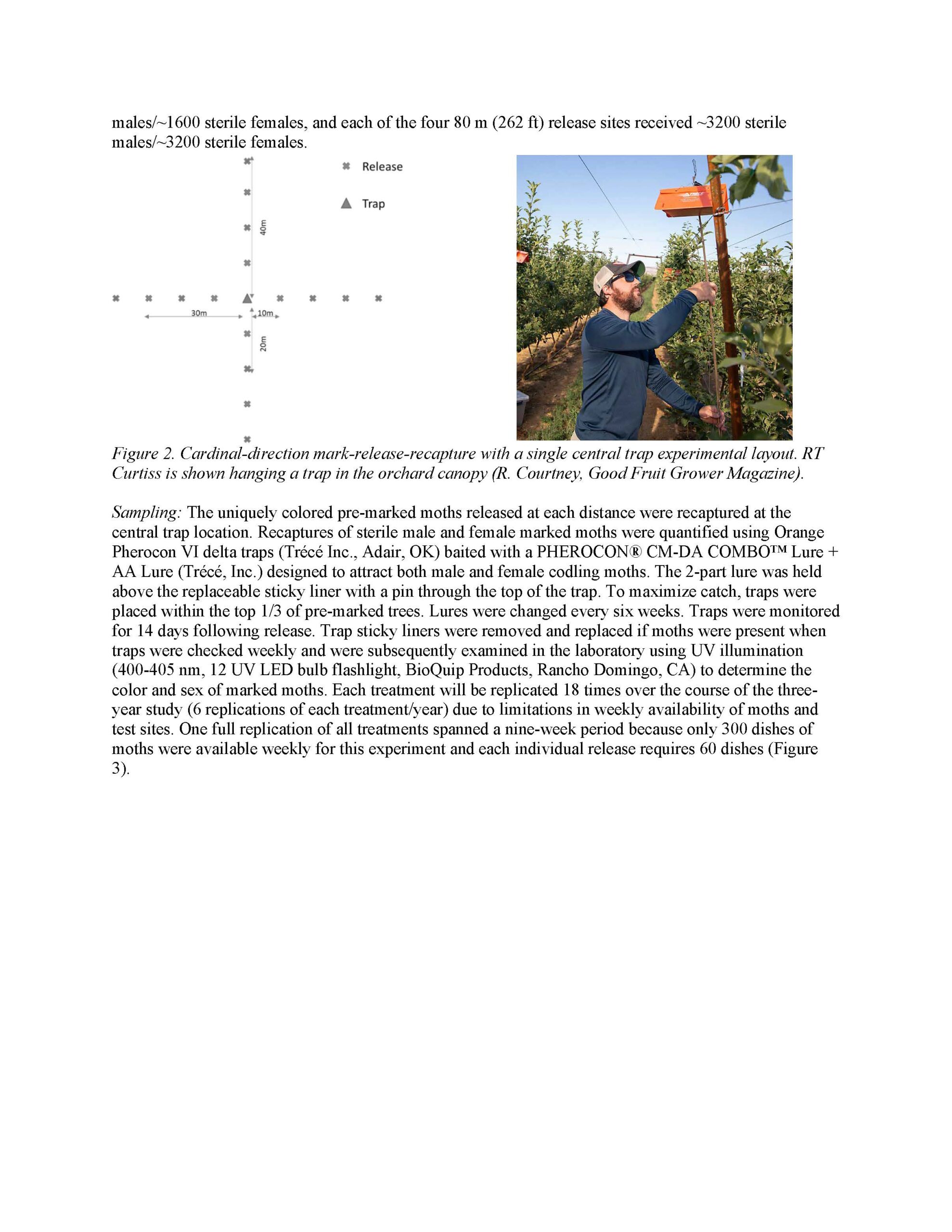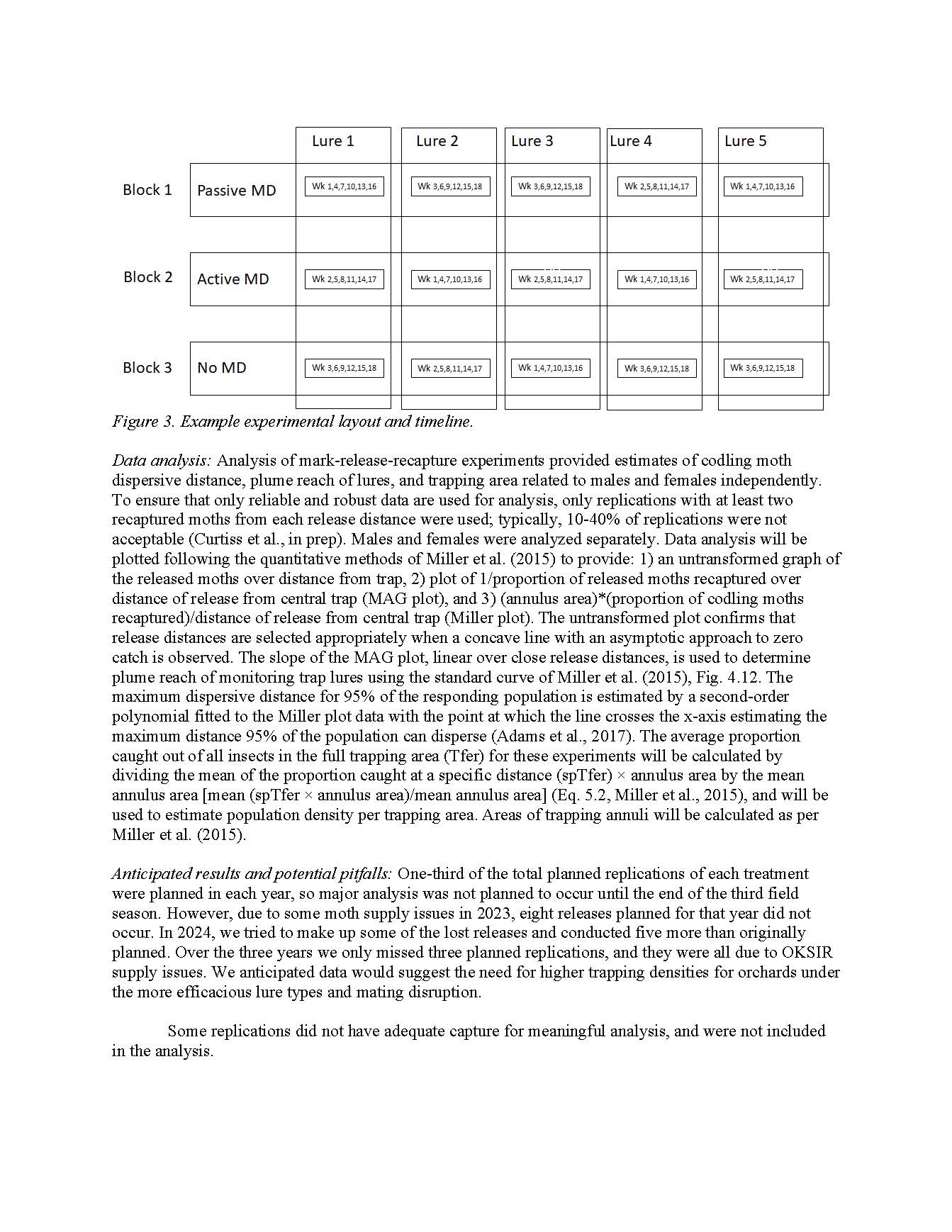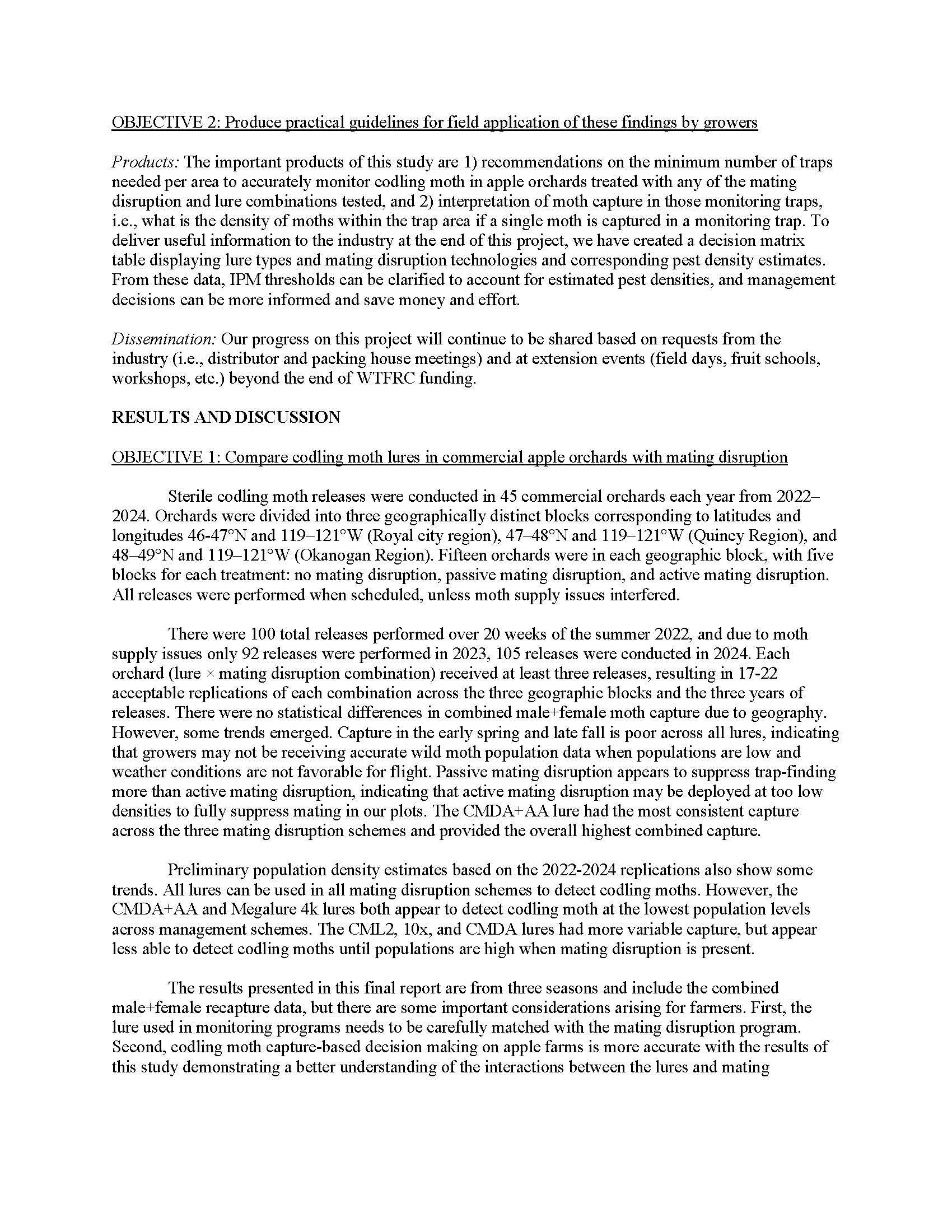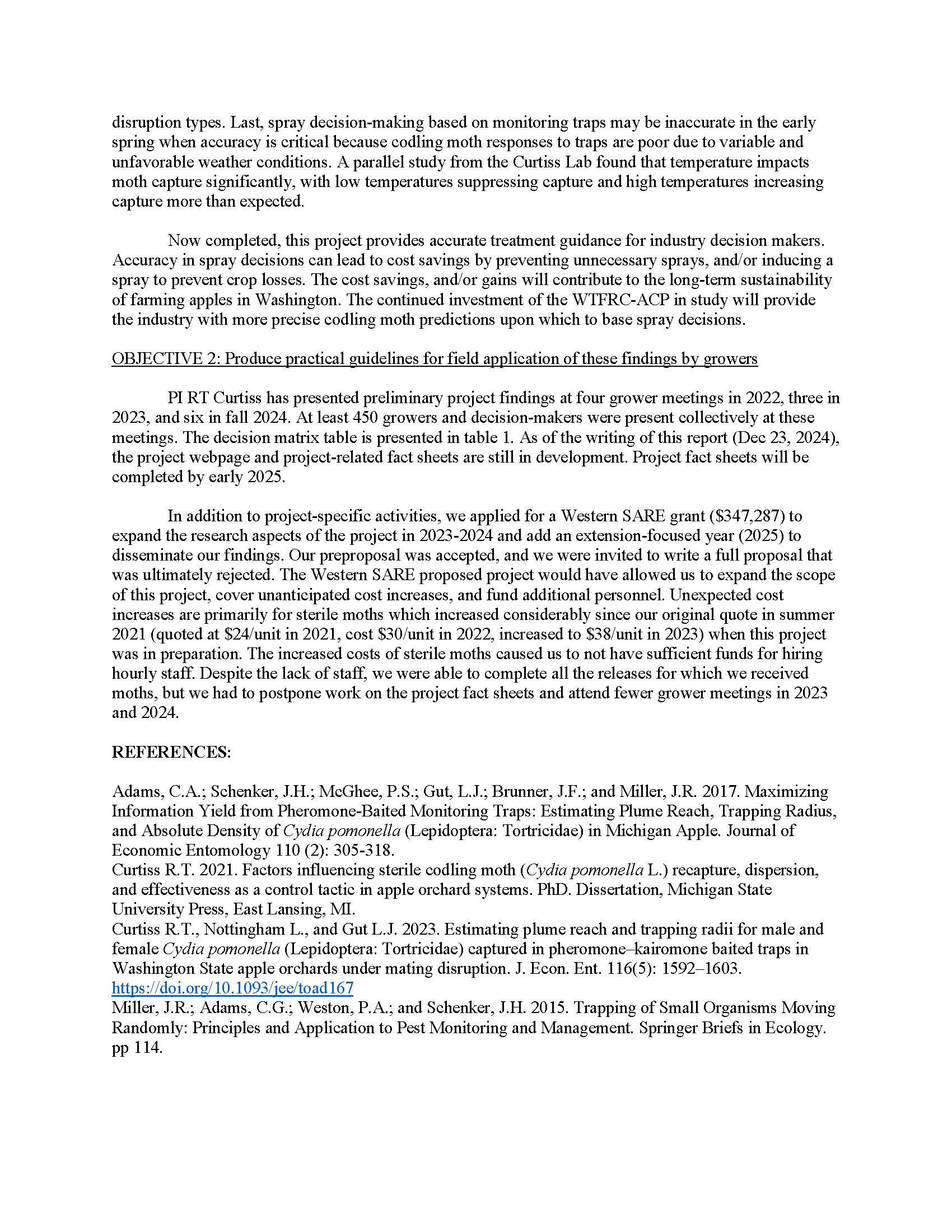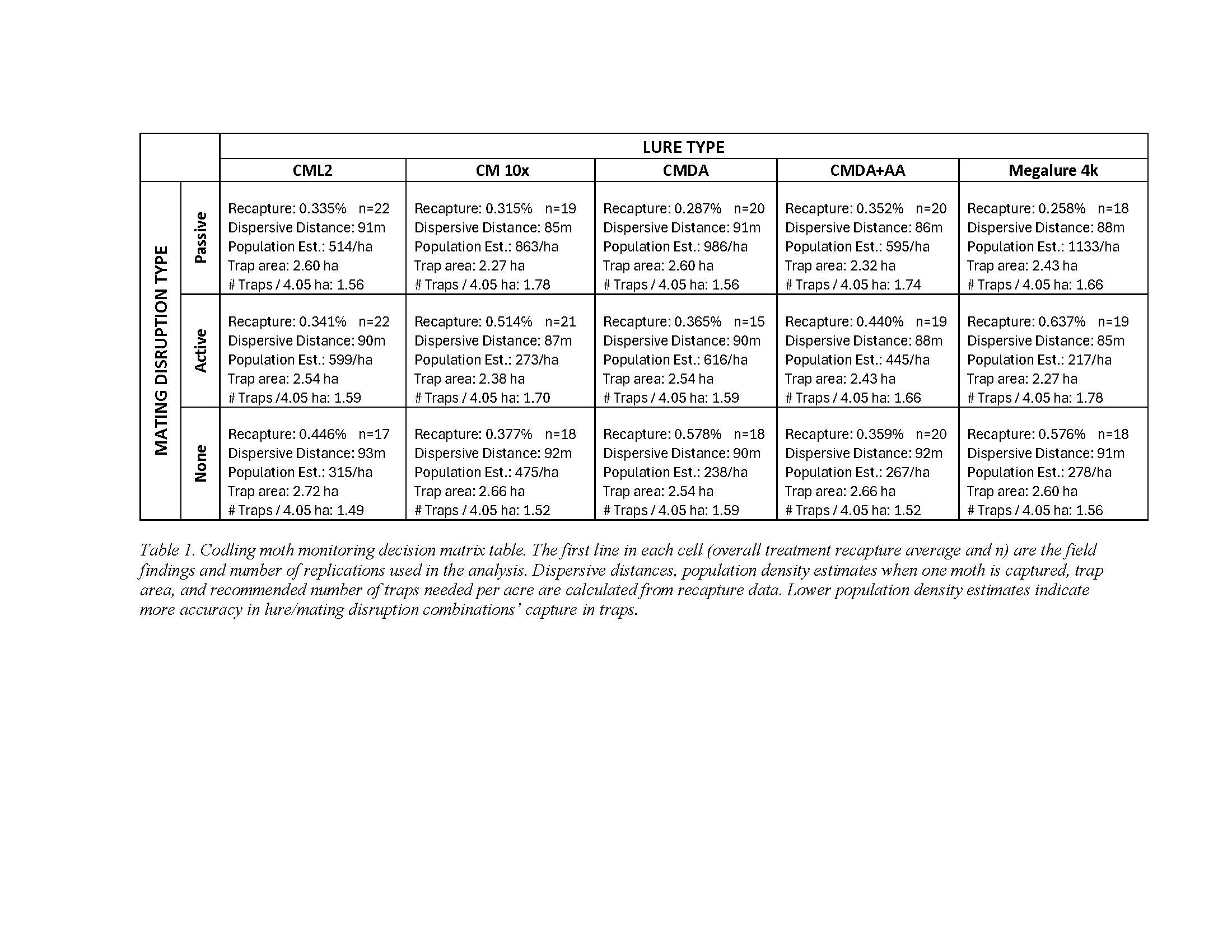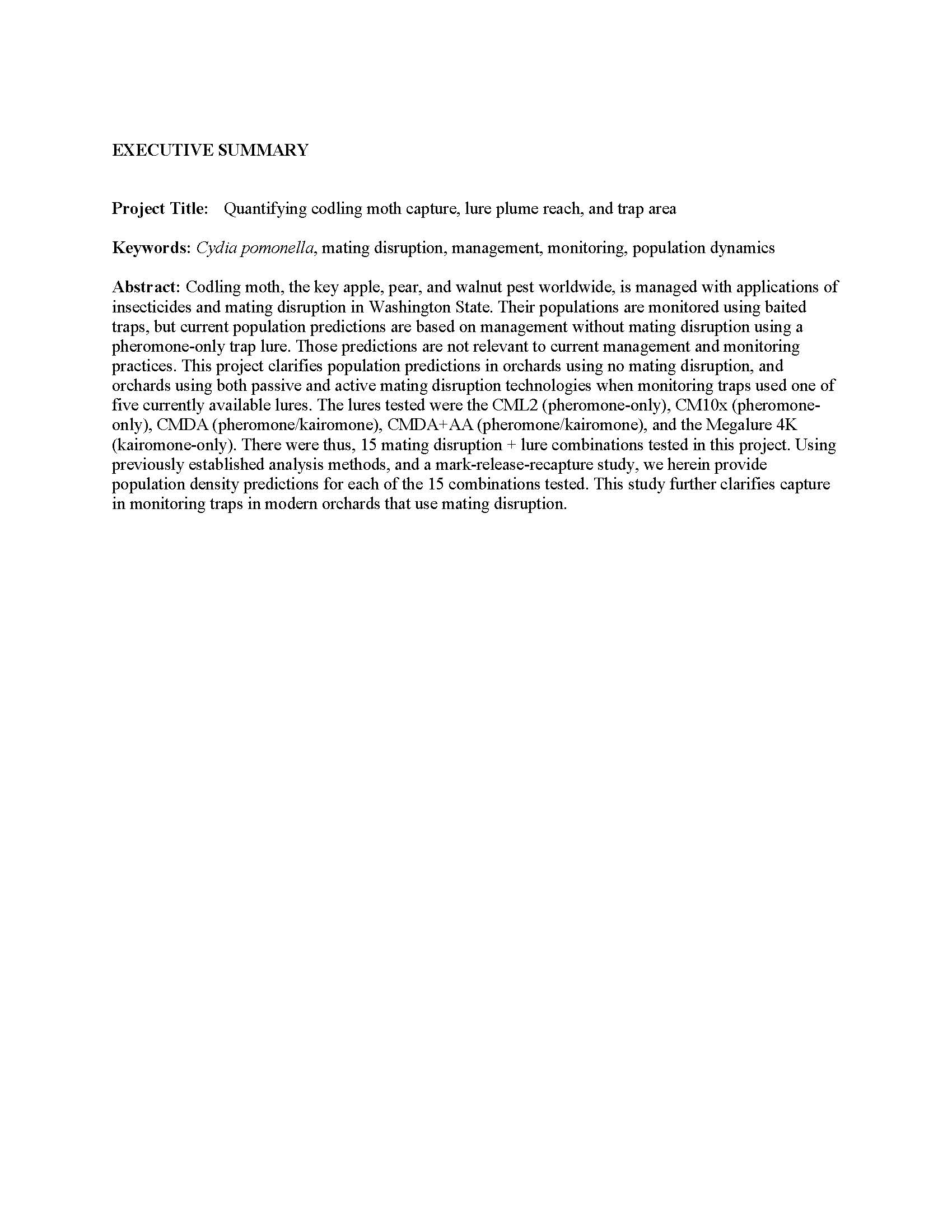Quantifying codling moth capture, lure plume reach, and trap area
Author: RT Curtiss
Published: 2025
Summary: Codling moth, the key apple, pear, and walnut pest worldwide, is managed with applications of insecticides and mating disruption in Washington State. Their populations are monitored using baited traps, but current population predictions are based on management without mating disruption using a pheromone-only trap lure. Those predictions are not relevant to current management and monitoring practices. This project clarifies population predictions in orchards using no mating disruption, and orchards using both passive and active mating disruption technologies when monitoring traps used one of five currently available lures. The lures tested were the CML2 (pheromone-only), CM10x (pheromone-only), CMDA (pheromone/kairomone), CMDA+AA (pheromone/kairomone), and the Megalure 4K (kairomone-only). There were thus, 15 mating disruption + lure combinations tested in this project. Using previously established analysis methods, and a mark-release-recapture study, we herein provide population density predictions for each of the 15 combinations tested. This study further clarifies capture in monitoring traps in modern orchards that use mating disruption.
Keywords:

